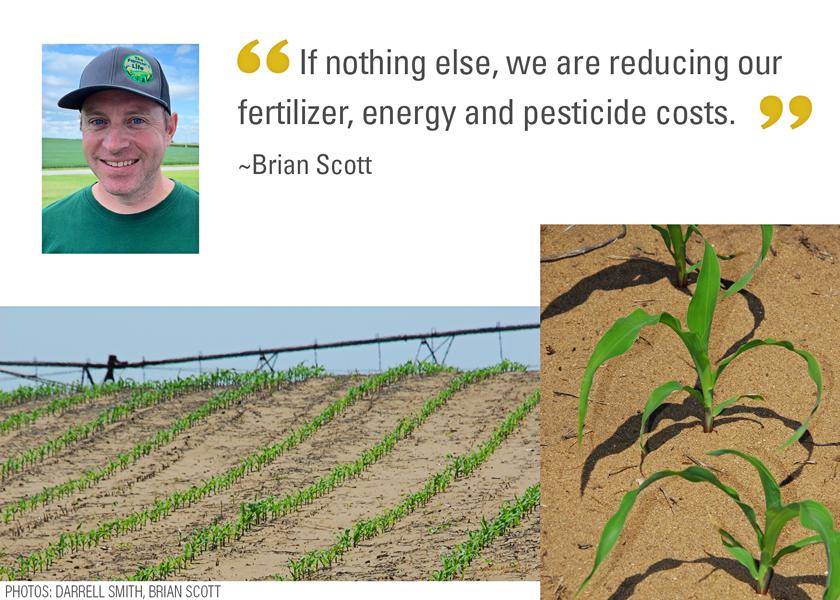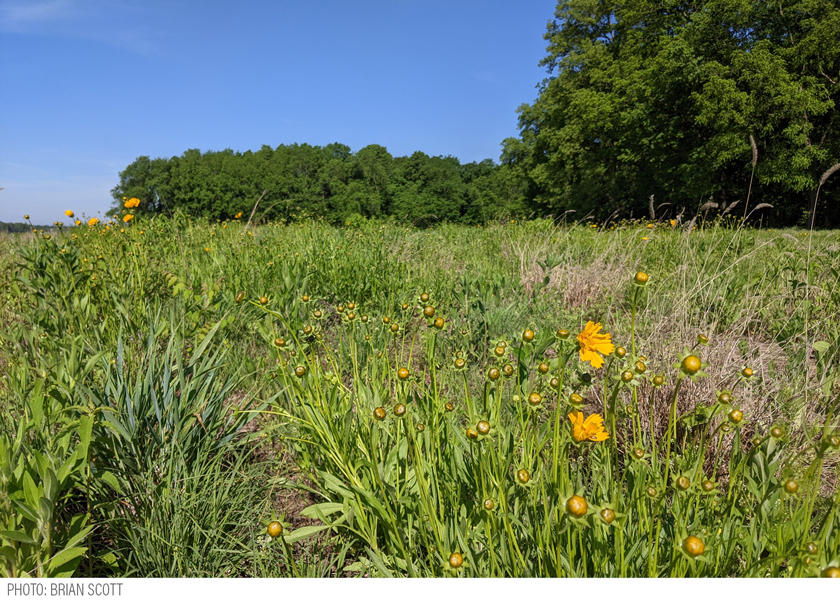Sub-Acre Profit Equation: Ensure Each Acre Earns Its Keep

Make sure each acre earns its spot on your farm roster
Planting into sand rarely produces bushels come fall. For years, Brian Scott tried to grow corn and soybeans on a rented farm that featured nine acres of sandy soils fit for a Florida beach.
“We’d drag all our equipment around, put the inputs on and then basically not harvest anything,” recalls Scott, who farms 2,200 acres near Monticello, Ind. “But unless it rained a lot, we wouldn’t see much grain due to the sand. Couple that with a meandering, yield-robbing tree line, and there’s just not a return on investment.”
In 2017, Scott bought the farm. He evaluated what to do with “the beach,” as he calls it and learned it had potential for a different kind of production — as home and habitat for honeybees and other pollinators.
In spring 2021, Scott seeded the sandy patch to a prescribed pollinator mix, thanks to financial and project support from his local Natural Resources Conservation Service (NRCS) office and Farm Service Agency. He is also enrolled in the Conservation Reserve Program (CRP).
“Between the cost-share payment for establishment and annual CRP payments going forward, we figure by the third year, we’ll make a little money,” he says. “If nothing else, we are reducing our fertilizer, energy and pesticide costs.”

WALKING DEAD ACRES
In the business and financial worlds, an operation with negative gross profit is essentially “walking dead,” says Nick Horob, product manager of Harvest Profit.
“More revenue added to the business only accrues more losses,” he says. “This same concept should be applied to your farm. If you find areas of your operation that are chronic areas of negative gross profit, they should find themselves on the chopping block.”
Farmers rarely operate entire fields that are chronic producers of negative gross profit, Horob says. If you are in that case, it might make sense to rent those acres to another farmer (if not tied to more productive fields, as they often can be).
More often, as in Scott’s case, a farm has some areas that don’t cover their variable expenses with revenue, says Horob: “If these areas are perpetual underperformers, they should have dramatic changes to the applied agronomics or be taken out of production altogether.”
In almost any tract of farmland, 5% to 20% is not consistently profitable, adds Dave Muth, managing director of asset management for Peoples Company. To arrive at this conclusion, Muth spent decades diving into environmental models, farm data and algorithmic learning.
The reasons behind the below-cost acres can span from soil characteristics or water-holding capacity.
“Some acres just don’t make sense to farm,” Muth says. “The cost of doing business and growing conventional grain crops has gotten so expensive you need to protect working capital and focus on sub-acre profitability.”
SOIL HEALTH ECONOMICS
So, what do you do with these select acres if you’re not going to produce corn and soybeans? Muth suggests exploring NRCS programs, which can provide funding for forage production or pollinator habitat through CRP or the Conservation Stewardship Program (CSP).
These decisions often lead to healthier soil, which Muth says, creates more resiliency and a pathway for future investments.
“The best example I have is standard Iowa soil that’s conventionally tilled has an average range of ¾" to 1" of water infiltration per hour,” he says. “If you switch to no-till and cover crops, you can triple that in a few years. Then, when you hit something north of five years you can be up to 5" to 6" water infiltration per hour. That is ROI.”
Define Your ROI Zone
Yield equals wins in farming — to the extent you hit that yield level at the right cost.
“True production efficiency is about looking at, for example, how many bushels did you produce per $1,000 spent,” Muth says. “With commodity crop production, you need to think about it in terms of return on expenses.”
Should you keep five-acre low spots or heavily trafficked headlands in production? Muth suggests analyzing them in the same way you would fertility zone management or moisture risk zones.
“Make decisions based on where you need to make a bigger investment or where you should do less,” he says. “How can you create thresholds for where you have realistic opportunities to generate return on expenses?”
To make such calculated decisions, Muth says to average and analyze at least five years of production and financial data.
Read More
Beware of Cost Creed on Your Farm







